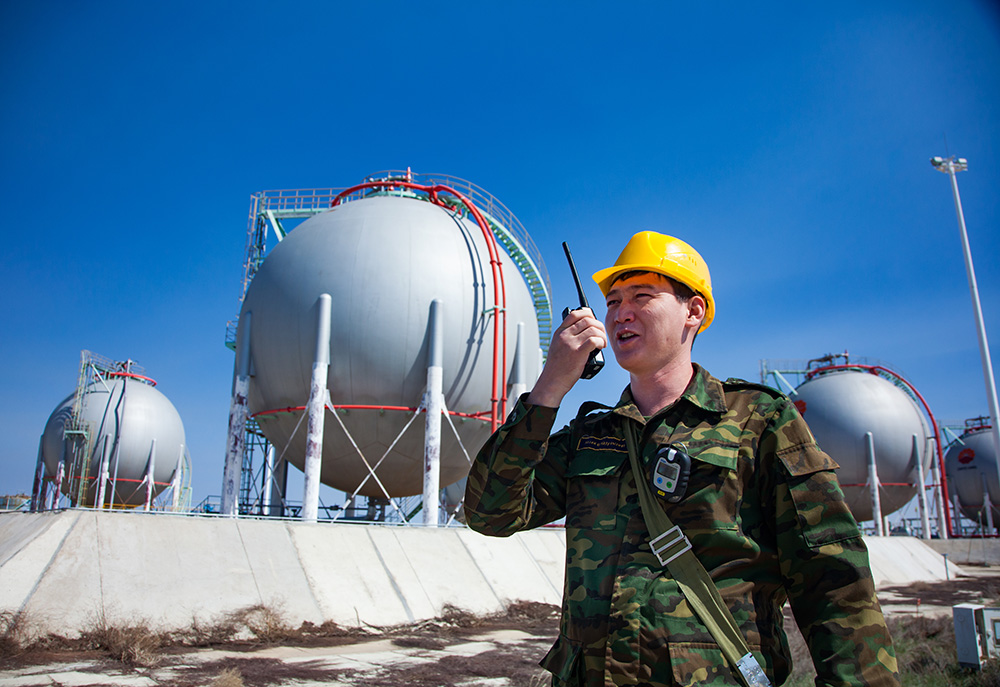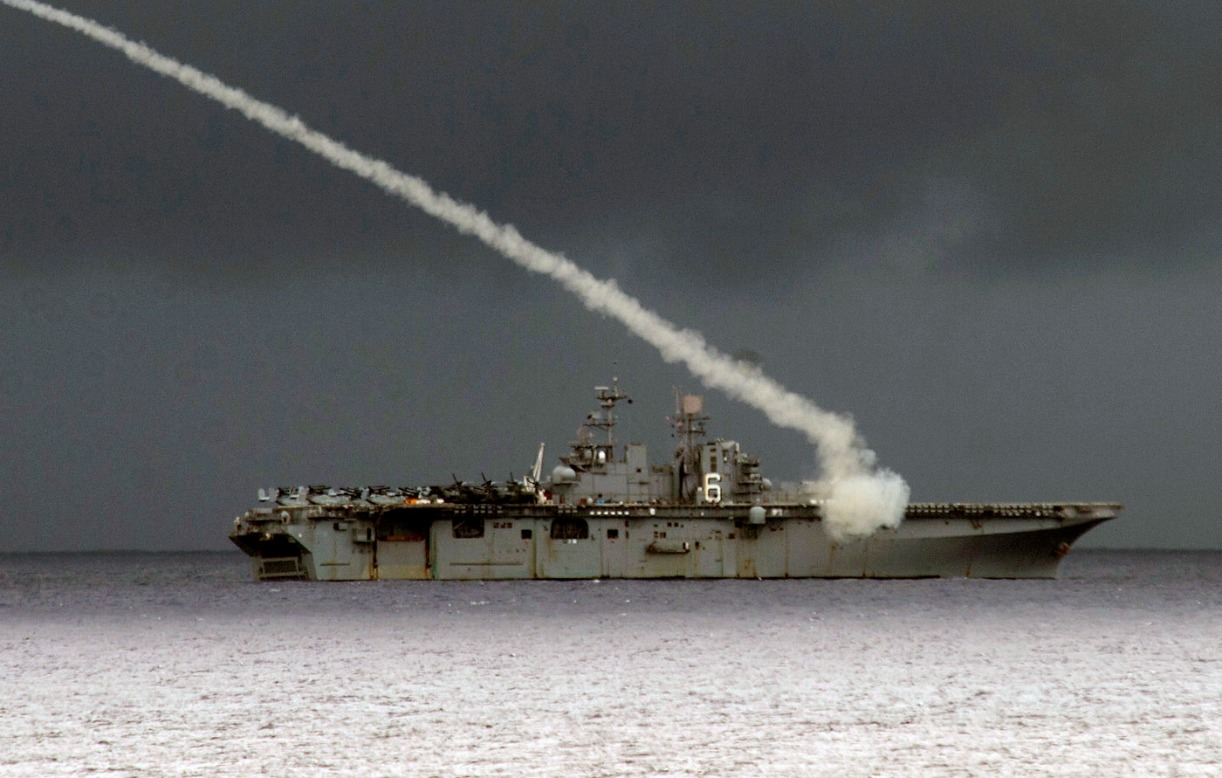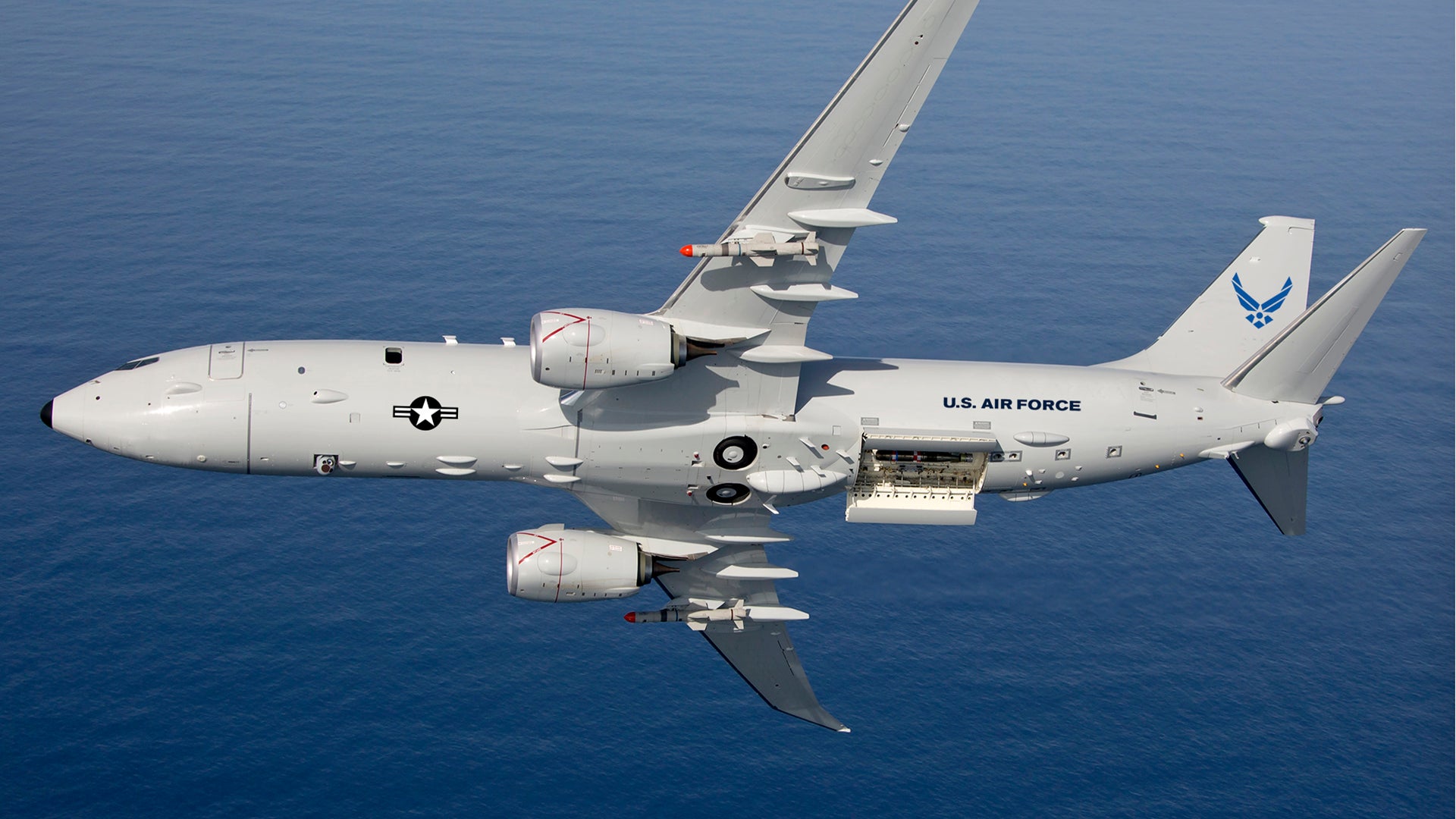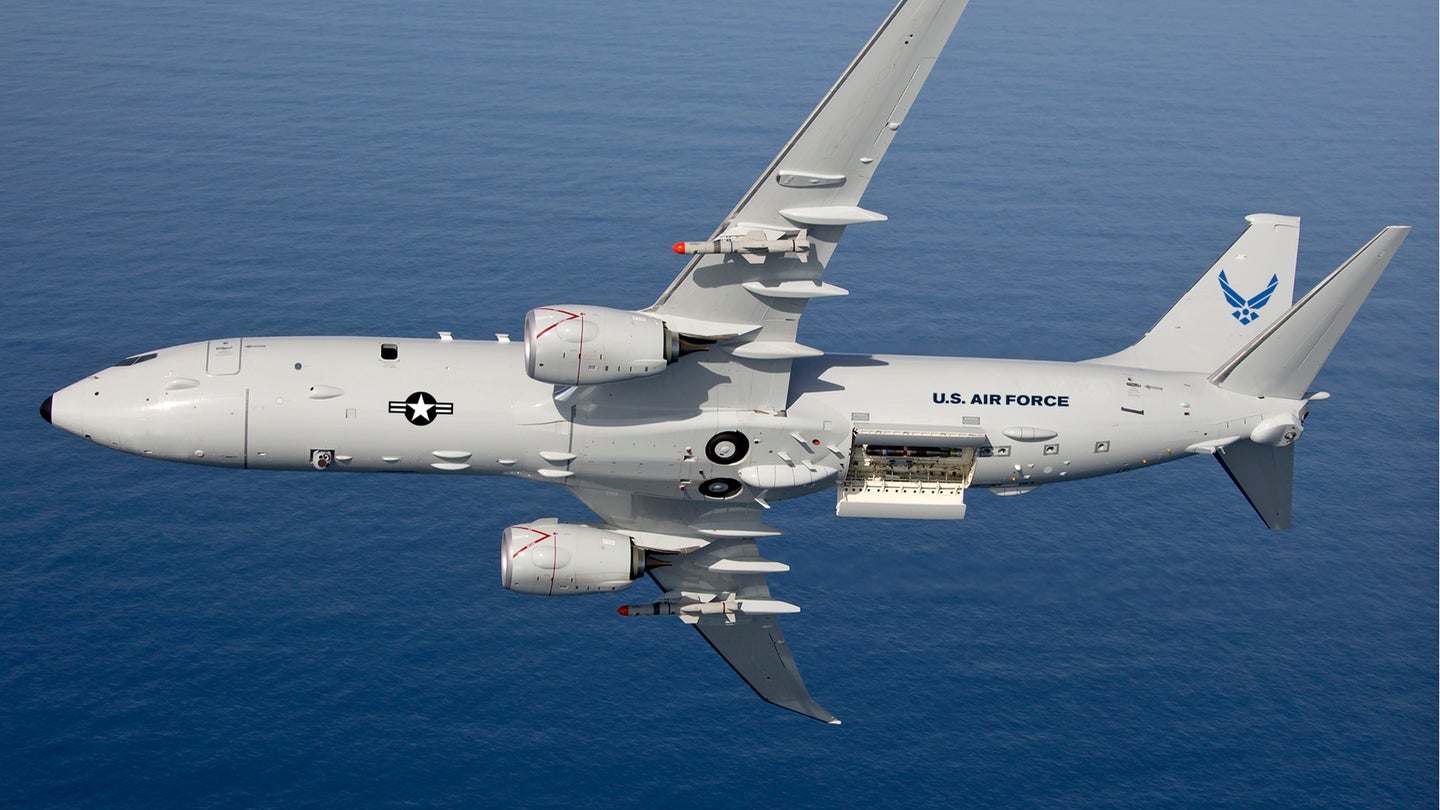Sorry for the delay folks.....
(479) 06-26-2021-to-07-02-2021__****THE****WINDS****of****WAR****
(480) 07-03-2021-to-07-09-2021__****THE****WINDS****of****WAR****
(481) 07-10-2021-to-07-16-2021__****THE****WINDS****of****WAR****
________________
Posted for fair use.....
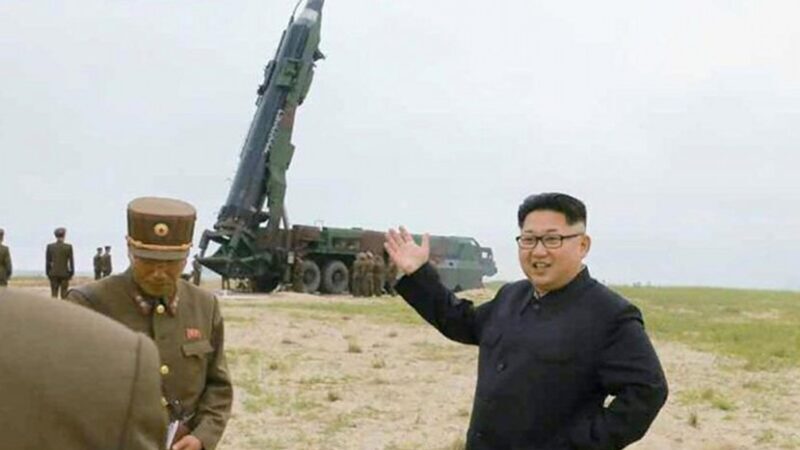
 www.eurasiareview.com
www.eurasiareview.com
The Nuclear Future Of East Asia – Analysis
July 18, 2021 IFIMES 0 Comments
By IFIMES
By Sze-Fung Lee*
In the face of North Korea and China’s continuous expansion and advancement in their nuclear arsenal in the past decade, the nuclear question for East Asian countries is now more urgent than ever—especially when U.S.’s credibility of extended deterrence has been shrinking since the post-cold war era. Whether to acquire independent nuclear deterrent has long been a huge controversy, with opinions rather polarized. Yet it is noteworthy that there is indeed gray zone between zero and one—the degree of latency nuclear deterrence.
This paper suggests that developing nuclear weapons may not be the wise choice for East Asian countries at the moment, however, given the fact that regional and international security in the Asia-Pacific is deemed to curtail, regardless of their decision to go nuclear or not, East Asia nations should increase their latency nuclear deterrence. In other words, even if they do not proceed to the final stage of acquiring independent nuclear deterrent, a latent nuclear weapons capability should at least be guaranteed. Meanwhile, for those who have already possessed certain extent of nuclear latency—for instance, Japan, South Korea, Taiwan—to shorten their breakout time whilst minimize obstacles for a possible nuclearization in the future.
The threat is ever-present—The Nuclear North Korea
Viewing from a realist perspective, the geographical locations of Japan, South Korea and Taiwan have always been a valid argument for their nuclearization—being surrounded by nuclear-armed neighbours, namely China and North Korea—these countries have witnessed an escalation of threat on an unprecedented scale since the cold war.
Having its first nuclear weapon tested in 2006, the total inventory North Korea now possess is estimated to be 30-40. With the misstep of relieving certain sanction during the Trump era, North Korea was able to revive and eventually expand its nuclear arsenal, making future negotiation between the Biden administration and the Kim regime much harder and less effective. Not only has North Korea’s missile test on March 25—which is the first since Mr. Joseph Biden’s presidency—signalled a clear message to the U.S. and her allies of its nuclearization will and stance, Pyongyang’s advancement in nuclear technologies also indicates a surging extent of threat.
For instance, North Korea state media KCNA claimed that the latest missile launched was a “new-type tactical guided projectile” which is capable of performing “gliding and pull-up” manoeuvres with an “improved version of a solid fuel engine”. In addition to these suspected “new type of missiles” that travels in low-attitude, the diversity of launches Pyongyang currently possess—from short-range ballistic missiles (SRBMs) to submarine-launched ballistic missiles (SLBMs), as well as the transporter erector launchers (TELs) and the cold launch system—increase the difficulty in intercepting them via Aegis destroyer or other ballistic missile defense system since it is onerous, if not impossible, to detect the exact time and venue of the possible launches. Indeed, the “new type of missile” could potentially render South Korea’s Terminal High Altitude Area Defense (THAAD) useless by evading radar detection system through its manoeuvres, according to a study from 38 North at The Henry L. Stimson Center.
Moreover, the cold launch (perpendicular launch) system used by the North also indicates that multiple nuclear weapons could be fired from the same launch pad without severely damages caused to the infrastructure[2]. Shigeru Ishiba, the former Defense Minister of Japan, has noted that not all incoming missiles would be able to be intercepted with the country’s missile defense system, and “even if that is possible, we cannot perfectly respond to saturation attacks”[3].
The Chinese nuclear arsenal
According to the SIPRI yearbook 2020, China’s total inventory of nuclear deterrent has reached 320, exceeding United Kingdom and France’s possession of nuclear warheads, of which London and Paris’s nuclear deterrent were considered as limited deterrence. In spite of the fact that China’s current nuclear stockpiles is still far less that what the Russians and Americans have, its nuclear technologies has been closely following the two military superpowers. For instance, the Chinese have successfully developed Multiple Independently Targetable Reentry Vehicle (MIRVs) and Maneuverable Reentry Vehicle (MARVs)—its intercontinental ballistic missile (ICBM) DF-41 is capable of equipping up to 10 MIRVs while its Medium-Range Ballistic Missile (MRBM) DF-21D could carry MARV warhead that poses challenges to the BMD systems—these advancement in nuclear technologies are the solid proof that the Chinese nukes are only steps away from Moscow and Washington. Yet China’s nuclear arsenal remains unchecked and is not confined by any major nuclear arms reduction treaty such as the New Strategic Arms Reduction Treaty (New START), of which US and Russia has just reached a mutual consensus to extend the treaty through Feb 4, 2026.
In spite of having advanced BMD system, for instance, Aegis Destroyer (Japan), THAAD (South Korea), Sky Bow III (Taiwan), the existing and emerging nuclear arsenal in Pyongyang and Beijing still leave East Asian states vulnerable under a hypothetical attack as mentioned above. Future could be worse than it seems—merely having deterrence by denial is not sufficient to safeguard national security—particularly with a shrinking credibility of U.S.’s extended deterrence since the post-cold war era.
America’s nuclear umbrella and the Alliance Dilemma
Theoretically speaking, alliance relations with the U.S. assure a certain extent of deterrence by punishment against hostile adversaries. For example, U.S. is committed to defend Japan under the 1960 Mutual Defense Treaty. Yet in reality, security could never be guaranteed. In a realist lens, state could not rely on others to defend their national interests, especially when it puts America’s homeland security at risk. Is U.S. willing to sacrifice Washington for Tokyo? Or New York for Seoul?
Strong rhetoric or even defense pact would not be able to ensure collective security, let alone strategic ambiguity, which is a strategy adopted by Washington for Taipei that is neither a binding security commitment nor the stance is clear. Regardless of the prospect of a better future than mere war and chaos, state should always prepare for the worst.
Besides, with Trump’s American First policy continuously undermining alliance relations in the past four years, East Asian countries may find it hard to restore mutual trust since diplomatic tracks are irreversible, despite Biden’s administration intention and effort to repair alliance and U.S.’s integrity as the global leader.
Moreover, even if alliance relations and credibility of extended deterrence is robust at the moment, but the bigger question is—could and should East Asian countries shelter under America’s nuclear umbrella forever? If they choose not to go nuclear, these states would be constantly threatened by their nuclear-armed neighbours, without a credible direct (nuclear) deterrence to safeguard national security; and forced to negotiate, or worse, compromise in the face of a possible nuclear extortion.
Undeniably, horizontal nuclear proliferation is always risky. Not only is it likely to deteriorate diplomatic relations with neighbouring countries, but also generates a (nuclear) regional arms race that eventually trap all nations into a vicious circle of security dilemma due to the lack of mutual trust in an anarchical system, which will consequently lead to a decrease in regional, as well as international security.
Yet with the expansion and advancement of Pyongyang and Beijing’s nuclear arsenal, regional and international security is deemed to curtail, regardless of East Asian countries’ decisions to go nuclear or not. As the official members of the Non-Proliferation Treaty (NPT), Japan’s and South Korea’s withdrawal may encourage other current non-nuclear weapon state to develop nukes. However, current existence of the NPT has already proven futile to prevent North Korea from acquiring its own nuclear weapons; or Israel, India and Pakistan, who are UN members but have never signed any of the treaties, to join the nuclear club.
The major concern about nuclear proliferation is never about the amount of warhead one possesses, but if they are in the wrong hands; for instance, a “rogue” state like North Korea. It is almost certain than none of the latent nuclear East Asia states would be considered “rogue” but just developed nations with rational calculation. In fact, the actual risk for these states joining the nuclear club in reality is not as high as most imagined. It may, indeed, help further bolster alliance relations between U.S., Japan and South Korea if they are able to come to some mutual consensuses in advance—developing independent nuclear deterrent is not an approach of alienating America’s presence as an effective ally but to strengthen security commitment with each other, and that US would support her allies in the Asia-Pacific in such attempt. The current existence of extended deterrence should not be a barrier for nuclearization. Rather, it should act as an extra protection for allied states.
Pave the way for future nuclearization
Admittedly, the road for any East Asia countries to go nuclear would be tough. Taipei’s attempt to develop nuclear weapons would imaginably trigger provocative response from Beijing, if not impossible, a pre-emptive strike that could lead to an escalation of war. Same situation goes for Seoul and Pyongyang even though the risk is relatively lower. As for Japan, although direct military confrontation is less likely comparing to Seoul and Taipei, the challenges Tokyo face for its nuclear option is no easier than any of them.
As the sole nation that has suffered from an atomic bomb explosion, Japan’s pacifism and anti-nuclear sentiment is embedded in its culture and society. According to a public opinion poll conducted by the Sankei News in 2017, 17.7% of the respondents agreed that “Japan should acquire its own nuclear weapons in the future” whilst 79.1% opposed to that idea. Despite having the imperative skills and technologies for an acquisition of independent nuclear deterrent (the breakout time for Japan is estimated to be about 6-12 months), Japan also lacks natural resources for producing nuclear warheadsand has to rely heavily on uranium imports. Upholding the three non-nuclear principle since WWII, Japan’s bilateral nuclear agreements with the U.S., U.K, France and Australia specified that all imported nuclear-related equipment and materials “must be used only for the non-military purposes”[4]. Violation of these agreements may result in sanctions that could cause devastated effect on Japan’s nuclear energy program, which supplies approximately 30% of the nation’s total electricity production[5]. These issues, however, are not irresolvable.
Undeniably, it may take time and effort to negotiate new agreements and to change people’s pacifism into an “active pacifism”, yet these should not be the justifications to avoid the acquisition of independent nuclear deterrent as ensuring national security should always be the top priority. It is because in face of a nuclear extortion, the effectiveness of a direct nuclear deterrence guaranteed by your own country could not be replaced by any other measures such as deterrence by denial via BMD system or deterrence by punishment via extended deterrence and defense pact. Therefore, if there are too many obstacles ahead, then perhaps the wiser choice for Japan, South Korea and Taiwan at the moment is to increase their nuclear latency deterrence, shorten the breakout time and pave their way clear for future nuclearization. In other words, to keep their nuclear option open and be able to play offense and defense at its own will when the time comes.
Nevertheless, in addition to strengthening one’s latency nuclear deterrence, as well as obtaining a more equal relationship in the official and unofficial alliance with America, East Asian countries that have similar interest and common enemies should united to form a new military alliance which included security treaty regarding collective defense like the NATO; and focuses more on countering hybrid warfare like the QUAD. If Japan, South Korea and Taiwan ever choose to go nuclear, a common mechanism could be established to ensure that these states would pursue a minimum to limited deterrence capability that do not endanger each other’s security but rather to strengthen it, which would help minimizing the destabilization brought to regional security while constituting a more balanced situation with nuclear-armed rivalries.
After all, proliferation may not be the best solution, it is certainly not the worst either.
About the author: Sze-Fung Lee is a freelance journalist and a researcher at the Global Studies Institute in Hong Kong. He holds a master degree in International Security at the University of Warwick. His research interests are in security policy, hybrid warfare, nuclear proliferation, and the politics of Hong Kong.
This article was published by The Hill, link: https://thehill.com/opinion/international/557304-the-biden-administration-and-lebanon-keep-up-the-pressure .
The views expressed in this article are the author’s own and do not necessarily reflect IFIMES official position.
Reference:
BBC News. (2021). ‘North Korea claims “new tactical guided” missiles launched’. Retrieved from https://www.bbc.com/news/world-asia-56533260
Hughes, L. (2007). ‘Why Japan Will Not Go Nuclear (Yet): International and Domestic Constraints on the Nuclearization of Japan.’ International Security, 31(4), pp.67-96.
Kaneko, K. (1996). Japan Needs No Umbrella. Bulletin of the Atomic Scientists, 52(2), pp.46-51.
Masamori, S. (2017). ‘Under the threat posed by North Korea, Japan should aim for a shift to the “two non-nuclear principles’. Sankei News. Retrieved fromhttps://www.sankei.com/column/news/170927/clm1709270007-n2.html
(佐瀬昌盛. (2017). 北朝鮮の脅威の下、日本は「非核二原則」への転換を目指せ. 産経ニュース)
Mochizuki, M. (2007). ‘Japan Tests the Nuclear Taboo.’ The Nonproliferation Review, 14(2), pp.303-328.
Lee, S. (2021). ‘Missile Deployments on the Korean Peninsula: An Accelerating Arms Race’. 38 North. The Henry L. Stimson Center. Retreived from https://www.38north.org/2021/05/missile-deployments-on-the-korean-peninsula-an-accelerating-arms-race/
Stockholm International Peace Research Institute. (2020). World nuclear forces. In ‘SIPRI Yearbook 2020’ (pp. 325-393). Solna: Oxford University Press. Retrieved from https://www.sipri.org/sites/default/files/YB20 10 WNF.pdf
U.S. Department of Defense. (2020). Military and Security Developments involving the People’s Republic of China 2020. Retieved from https://media.defense.gov/2020/Sep/01/2002488689/-1/-1/1/2020-DOD-CHINA-MILITARY-POWER-REPORT-FINAL.PDF
U.S. Department of Defense. (2019). Missile Defense Review. Retrieved from https://www.defense.gov/Portals/1/I...nse-Review/The 2019 MDR_Executive Summary.pdf
Yoshida, F. (2018). ‘Japan should scrutinize the credibility of the U.S. nuclear umbrella: an interview with Shigeru Ishiba’. Journal for Peace and Nuclear Disarmament, 1(2), pp.464-473
[1] IFIMES – International Institute for Middle East and Balkan Studies, based in Ljubljana, Slovenia, has Special Consultative status at ECOSOC/UN, New York, since 2018.
[2] Yoshida, F. (2018). ‘Japan should scrutinize the credibility of the U.S. nuclear umbrella: an interview with Shigeru Ishiba’. Journal for Peace and Nuclear Disarmament, 1(2), pp.464-473
[3] Ibis.
[4] Kaneko, K. (1996). Japan Needs No Umbrella. Bulletin of the Atomic Scientists, 52(2), pp.46-51.
[5] Hughes, L. (2007). ‘Why Japan Will Not Go Nuclear (Yet): International and Domestic Constraints on the Nuclearization of Japan.’ International Security, 31(4), pp.67-96.

IFIMES
IFIMES – International Institute for Middle-East and Balkan studies, based in Ljubljana, Slovenia, has special consultative status with the Economic and Social Council ECOSOC/UN since 2018. IFIMES is also the publisher of the biannual international scientific journal European Perspectives. IFIMES gathers and selects various information and sources on key conflict areas in the world. The Institute analyses mutual relations among parties with an aim to promote the importance of reconciliation, early prevention/preventive diplomacy and disarmament/ confidence building measures in the regional or global conflict resolution of the existing conflicts and the role of preventive actions against new global disputes.
(479) 06-26-2021-to-07-02-2021__****THE****WINDS****of****WAR****
(480) 07-03-2021-to-07-09-2021__****THE****WINDS****of****WAR****
(481) 07-10-2021-to-07-16-2021__****THE****WINDS****of****WAR****
________________
Posted for fair use.....

The Nuclear Future Of East Asia – Analysis
By Sze-Fung Lee* In the face of North Korea and China’s continuous expansion and advancement in their nuclear arsenal in the past decade, the nuclear question for East Asian countries is now more urgent than ever—especially when U.S.’s credibility of extended deterrence has been shrinking since...
 www.eurasiareview.com
www.eurasiareview.com
The Nuclear Future Of East Asia – Analysis
July 18, 2021 IFIMES 0 Comments
By IFIMES
By Sze-Fung Lee*
In the face of North Korea and China’s continuous expansion and advancement in their nuclear arsenal in the past decade, the nuclear question for East Asian countries is now more urgent than ever—especially when U.S.’s credibility of extended deterrence has been shrinking since the post-cold war era. Whether to acquire independent nuclear deterrent has long been a huge controversy, with opinions rather polarized. Yet it is noteworthy that there is indeed gray zone between zero and one—the degree of latency nuclear deterrence.
This paper suggests that developing nuclear weapons may not be the wise choice for East Asian countries at the moment, however, given the fact that regional and international security in the Asia-Pacific is deemed to curtail, regardless of their decision to go nuclear or not, East Asia nations should increase their latency nuclear deterrence. In other words, even if they do not proceed to the final stage of acquiring independent nuclear deterrent, a latent nuclear weapons capability should at least be guaranteed. Meanwhile, for those who have already possessed certain extent of nuclear latency—for instance, Japan, South Korea, Taiwan—to shorten their breakout time whilst minimize obstacles for a possible nuclearization in the future.
The threat is ever-present—The Nuclear North Korea
Viewing from a realist perspective, the geographical locations of Japan, South Korea and Taiwan have always been a valid argument for their nuclearization—being surrounded by nuclear-armed neighbours, namely China and North Korea—these countries have witnessed an escalation of threat on an unprecedented scale since the cold war.
Having its first nuclear weapon tested in 2006, the total inventory North Korea now possess is estimated to be 30-40. With the misstep of relieving certain sanction during the Trump era, North Korea was able to revive and eventually expand its nuclear arsenal, making future negotiation between the Biden administration and the Kim regime much harder and less effective. Not only has North Korea’s missile test on March 25—which is the first since Mr. Joseph Biden’s presidency—signalled a clear message to the U.S. and her allies of its nuclearization will and stance, Pyongyang’s advancement in nuclear technologies also indicates a surging extent of threat.
For instance, North Korea state media KCNA claimed that the latest missile launched was a “new-type tactical guided projectile” which is capable of performing “gliding and pull-up” manoeuvres with an “improved version of a solid fuel engine”. In addition to these suspected “new type of missiles” that travels in low-attitude, the diversity of launches Pyongyang currently possess—from short-range ballistic missiles (SRBMs) to submarine-launched ballistic missiles (SLBMs), as well as the transporter erector launchers (TELs) and the cold launch system—increase the difficulty in intercepting them via Aegis destroyer or other ballistic missile defense system since it is onerous, if not impossible, to detect the exact time and venue of the possible launches. Indeed, the “new type of missile” could potentially render South Korea’s Terminal High Altitude Area Defense (THAAD) useless by evading radar detection system through its manoeuvres, according to a study from 38 North at The Henry L. Stimson Center.
Moreover, the cold launch (perpendicular launch) system used by the North also indicates that multiple nuclear weapons could be fired from the same launch pad without severely damages caused to the infrastructure[2]. Shigeru Ishiba, the former Defense Minister of Japan, has noted that not all incoming missiles would be able to be intercepted with the country’s missile defense system, and “even if that is possible, we cannot perfectly respond to saturation attacks”[3].
The Chinese nuclear arsenal
According to the SIPRI yearbook 2020, China’s total inventory of nuclear deterrent has reached 320, exceeding United Kingdom and France’s possession of nuclear warheads, of which London and Paris’s nuclear deterrent were considered as limited deterrence. In spite of the fact that China’s current nuclear stockpiles is still far less that what the Russians and Americans have, its nuclear technologies has been closely following the two military superpowers. For instance, the Chinese have successfully developed Multiple Independently Targetable Reentry Vehicle (MIRVs) and Maneuverable Reentry Vehicle (MARVs)—its intercontinental ballistic missile (ICBM) DF-41 is capable of equipping up to 10 MIRVs while its Medium-Range Ballistic Missile (MRBM) DF-21D could carry MARV warhead that poses challenges to the BMD systems—these advancement in nuclear technologies are the solid proof that the Chinese nukes are only steps away from Moscow and Washington. Yet China’s nuclear arsenal remains unchecked and is not confined by any major nuclear arms reduction treaty such as the New Strategic Arms Reduction Treaty (New START), of which US and Russia has just reached a mutual consensus to extend the treaty through Feb 4, 2026.
In addition to China’s expansion of military capabilities and ambition in developing hypersonic glide vehicles (HGVs) and new MARVs, there is no lack of scepticism of its no-first use policy, especially with Beijing’s coercive diplomacy and provocative actions in the East and South China Sea, regarding “freedom of navigation” and other sovereignty rights issues. These all raise concerns and generate insecurity from neighbouring countries and hence, East Asia states i.e. Japan, South Korea and Taiwan would inevitably have to reconsider their nuclear option.Sign up for the Eurasia Review newsletter. Click here to have Eurasia Review's newsletter delivered via RSS, as an email newsletter, via mobile or on your personal news page.
In spite of having advanced BMD system, for instance, Aegis Destroyer (Japan), THAAD (South Korea), Sky Bow III (Taiwan), the existing and emerging nuclear arsenal in Pyongyang and Beijing still leave East Asian states vulnerable under a hypothetical attack as mentioned above. Future could be worse than it seems—merely having deterrence by denial is not sufficient to safeguard national security—particularly with a shrinking credibility of U.S.’s extended deterrence since the post-cold war era.
America’s nuclear umbrella and the Alliance Dilemma
Theoretically speaking, alliance relations with the U.S. assure a certain extent of deterrence by punishment against hostile adversaries. For example, U.S. is committed to defend Japan under the 1960 Mutual Defense Treaty. Yet in reality, security could never be guaranteed. In a realist lens, state could not rely on others to defend their national interests, especially when it puts America’s homeland security at risk. Is U.S. willing to sacrifice Washington for Tokyo? Or New York for Seoul?
Strong rhetoric or even defense pact would not be able to ensure collective security, let alone strategic ambiguity, which is a strategy adopted by Washington for Taipei that is neither a binding security commitment nor the stance is clear. Regardless of the prospect of a better future than mere war and chaos, state should always prepare for the worst.
Besides, with Trump’s American First policy continuously undermining alliance relations in the past four years, East Asian countries may find it hard to restore mutual trust since diplomatic tracks are irreversible, despite Biden’s administration intention and effort to repair alliance and U.S.’s integrity as the global leader.
Moreover, even if alliance relations and credibility of extended deterrence is robust at the moment, but the bigger question is—could and should East Asian countries shelter under America’s nuclear umbrella forever? If they choose not to go nuclear, these states would be constantly threatened by their nuclear-armed neighbours, without a credible direct (nuclear) deterrence to safeguard national security; and forced to negotiate, or worse, compromise in the face of a possible nuclear extortion.
Undeniably, horizontal nuclear proliferation is always risky. Not only is it likely to deteriorate diplomatic relations with neighbouring countries, but also generates a (nuclear) regional arms race that eventually trap all nations into a vicious circle of security dilemma due to the lack of mutual trust in an anarchical system, which will consequently lead to a decrease in regional, as well as international security.
Yet with the expansion and advancement of Pyongyang and Beijing’s nuclear arsenal, regional and international security is deemed to curtail, regardless of East Asian countries’ decisions to go nuclear or not. As the official members of the Non-Proliferation Treaty (NPT), Japan’s and South Korea’s withdrawal may encourage other current non-nuclear weapon state to develop nukes. However, current existence of the NPT has already proven futile to prevent North Korea from acquiring its own nuclear weapons; or Israel, India and Pakistan, who are UN members but have never signed any of the treaties, to join the nuclear club.
The major concern about nuclear proliferation is never about the amount of warhead one possesses, but if they are in the wrong hands; for instance, a “rogue” state like North Korea. It is almost certain than none of the latent nuclear East Asia states would be considered “rogue” but just developed nations with rational calculation. In fact, the actual risk for these states joining the nuclear club in reality is not as high as most imagined. It may, indeed, help further bolster alliance relations between U.S., Japan and South Korea if they are able to come to some mutual consensuses in advance—developing independent nuclear deterrent is not an approach of alienating America’s presence as an effective ally but to strengthen security commitment with each other, and that US would support her allies in the Asia-Pacific in such attempt. The current existence of extended deterrence should not be a barrier for nuclearization. Rather, it should act as an extra protection for allied states.
Pave the way for future nuclearization
Admittedly, the road for any East Asia countries to go nuclear would be tough. Taipei’s attempt to develop nuclear weapons would imaginably trigger provocative response from Beijing, if not impossible, a pre-emptive strike that could lead to an escalation of war. Same situation goes for Seoul and Pyongyang even though the risk is relatively lower. As for Japan, although direct military confrontation is less likely comparing to Seoul and Taipei, the challenges Tokyo face for its nuclear option is no easier than any of them.
As the sole nation that has suffered from an atomic bomb explosion, Japan’s pacifism and anti-nuclear sentiment is embedded in its culture and society. According to a public opinion poll conducted by the Sankei News in 2017, 17.7% of the respondents agreed that “Japan should acquire its own nuclear weapons in the future” whilst 79.1% opposed to that idea. Despite having the imperative skills and technologies for an acquisition of independent nuclear deterrent (the breakout time for Japan is estimated to be about 6-12 months), Japan also lacks natural resources for producing nuclear warheadsand has to rely heavily on uranium imports. Upholding the three non-nuclear principle since WWII, Japan’s bilateral nuclear agreements with the U.S., U.K, France and Australia specified that all imported nuclear-related equipment and materials “must be used only for the non-military purposes”[4]. Violation of these agreements may result in sanctions that could cause devastated effect on Japan’s nuclear energy program, which supplies approximately 30% of the nation’s total electricity production[5]. These issues, however, are not irresolvable.
Undeniably, it may take time and effort to negotiate new agreements and to change people’s pacifism into an “active pacifism”, yet these should not be the justifications to avoid the acquisition of independent nuclear deterrent as ensuring national security should always be the top priority. It is because in face of a nuclear extortion, the effectiveness of a direct nuclear deterrence guaranteed by your own country could not be replaced by any other measures such as deterrence by denial via BMD system or deterrence by punishment via extended deterrence and defense pact. Therefore, if there are too many obstacles ahead, then perhaps the wiser choice for Japan, South Korea and Taiwan at the moment is to increase their nuclear latency deterrence, shorten the breakout time and pave their way clear for future nuclearization. In other words, to keep their nuclear option open and be able to play offense and defense at its own will when the time comes.
Nevertheless, in addition to strengthening one’s latency nuclear deterrence, as well as obtaining a more equal relationship in the official and unofficial alliance with America, East Asian countries that have similar interest and common enemies should united to form a new military alliance which included security treaty regarding collective defense like the NATO; and focuses more on countering hybrid warfare like the QUAD. If Japan, South Korea and Taiwan ever choose to go nuclear, a common mechanism could be established to ensure that these states would pursue a minimum to limited deterrence capability that do not endanger each other’s security but rather to strengthen it, which would help minimizing the destabilization brought to regional security while constituting a more balanced situation with nuclear-armed rivalries.
After all, proliferation may not be the best solution, it is certainly not the worst either.
About the author: Sze-Fung Lee is a freelance journalist and a researcher at the Global Studies Institute in Hong Kong. He holds a master degree in International Security at the University of Warwick. His research interests are in security policy, hybrid warfare, nuclear proliferation, and the politics of Hong Kong.
This article was published by The Hill, link: https://thehill.com/opinion/international/557304-the-biden-administration-and-lebanon-keep-up-the-pressure .
The views expressed in this article are the author’s own and do not necessarily reflect IFIMES official position.
Reference:
BBC News. (2021). ‘North Korea claims “new tactical guided” missiles launched’. Retrieved from https://www.bbc.com/news/world-asia-56533260
Hughes, L. (2007). ‘Why Japan Will Not Go Nuclear (Yet): International and Domestic Constraints on the Nuclearization of Japan.’ International Security, 31(4), pp.67-96.
Kaneko, K. (1996). Japan Needs No Umbrella. Bulletin of the Atomic Scientists, 52(2), pp.46-51.
Masamori, S. (2017). ‘Under the threat posed by North Korea, Japan should aim for a shift to the “two non-nuclear principles’. Sankei News. Retrieved fromhttps://www.sankei.com/column/news/170927/clm1709270007-n2.html
(佐瀬昌盛. (2017). 北朝鮮の脅威の下、日本は「非核二原則」への転換を目指せ. 産経ニュース)
Mochizuki, M. (2007). ‘Japan Tests the Nuclear Taboo.’ The Nonproliferation Review, 14(2), pp.303-328.
Lee, S. (2021). ‘Missile Deployments on the Korean Peninsula: An Accelerating Arms Race’. 38 North. The Henry L. Stimson Center. Retreived from https://www.38north.org/2021/05/missile-deployments-on-the-korean-peninsula-an-accelerating-arms-race/
Stockholm International Peace Research Institute. (2020). World nuclear forces. In ‘SIPRI Yearbook 2020’ (pp. 325-393). Solna: Oxford University Press. Retrieved from https://www.sipri.org/sites/default/files/YB20 10 WNF.pdf
U.S. Department of Defense. (2020). Military and Security Developments involving the People’s Republic of China 2020. Retieved from https://media.defense.gov/2020/Sep/01/2002488689/-1/-1/1/2020-DOD-CHINA-MILITARY-POWER-REPORT-FINAL.PDF
U.S. Department of Defense. (2019). Missile Defense Review. Retrieved from https://www.defense.gov/Portals/1/I...nse-Review/The 2019 MDR_Executive Summary.pdf
Yoshida, F. (2018). ‘Japan should scrutinize the credibility of the U.S. nuclear umbrella: an interview with Shigeru Ishiba’. Journal for Peace and Nuclear Disarmament, 1(2), pp.464-473
[1] IFIMES – International Institute for Middle East and Balkan Studies, based in Ljubljana, Slovenia, has Special Consultative status at ECOSOC/UN, New York, since 2018.
[2] Yoshida, F. (2018). ‘Japan should scrutinize the credibility of the U.S. nuclear umbrella: an interview with Shigeru Ishiba’. Journal for Peace and Nuclear Disarmament, 1(2), pp.464-473
[3] Ibis.
[4] Kaneko, K. (1996). Japan Needs No Umbrella. Bulletin of the Atomic Scientists, 52(2), pp.46-51.
[5] Hughes, L. (2007). ‘Why Japan Will Not Go Nuclear (Yet): International and Domestic Constraints on the Nuclearization of Japan.’ International Security, 31(4), pp.67-96.

IFIMES
IFIMES – International Institute for Middle-East and Balkan studies, based in Ljubljana, Slovenia, has special consultative status with the Economic and Social Council ECOSOC/UN since 2018. IFIMES is also the publisher of the biannual international scientific journal European Perspectives. IFIMES gathers and selects various information and sources on key conflict areas in the world. The Institute analyses mutual relations among parties with an aim to promote the importance of reconciliation, early prevention/preventive diplomacy and disarmament/ confidence building measures in the regional or global conflict resolution of the existing conflicts and the role of preventive actions against new global disputes.


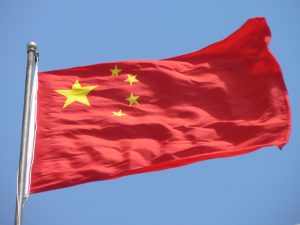

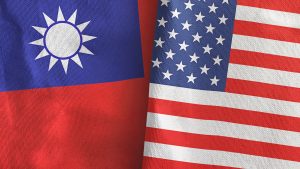


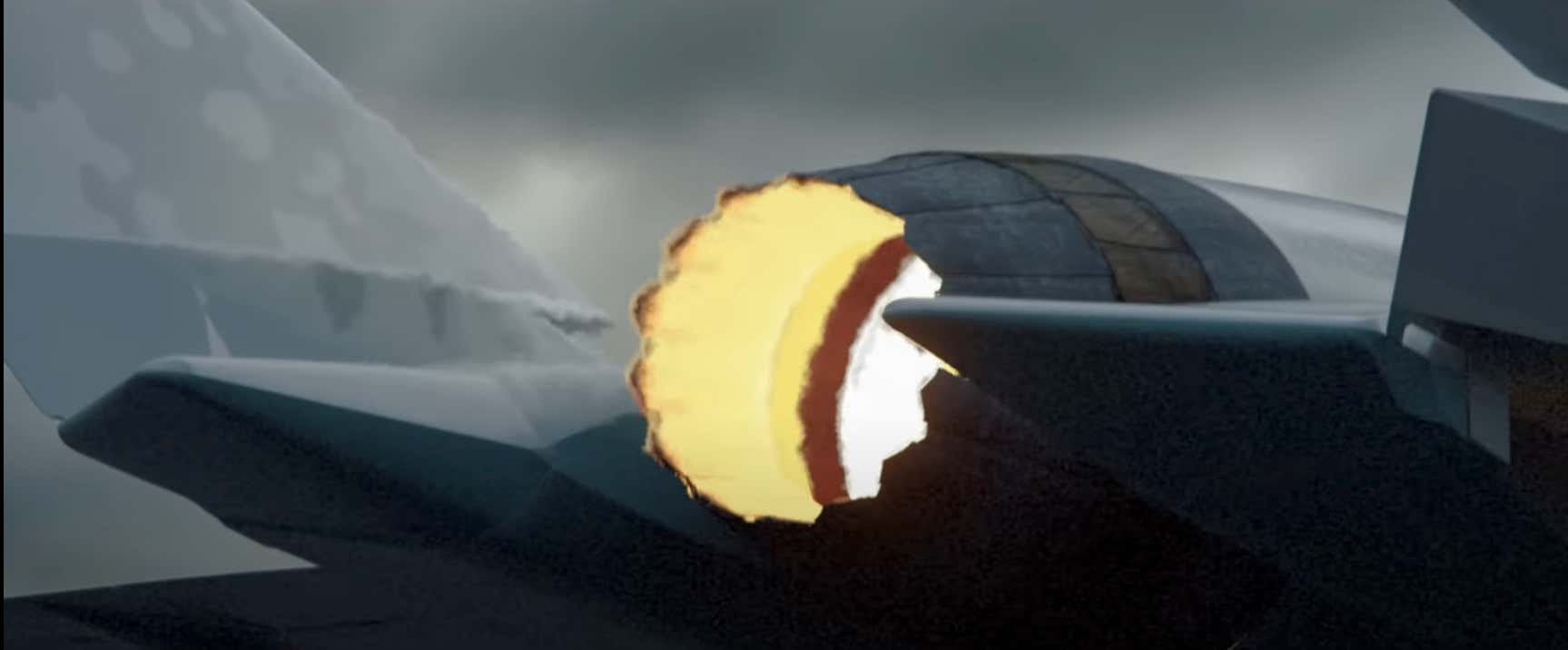
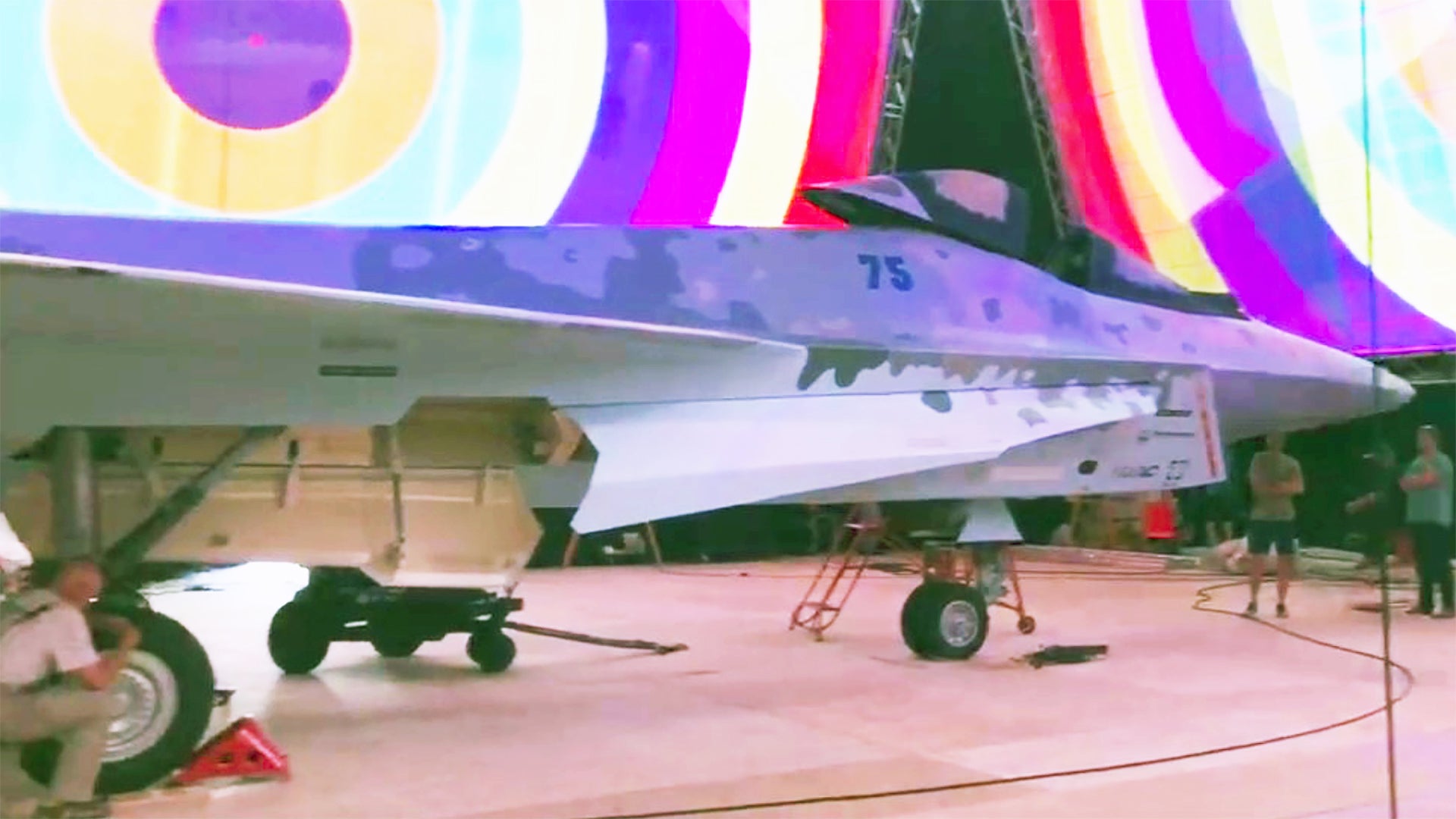

:quality(70)/cloudfront-us-east-1.images.arcpublishing.com/archetype/LE5FTKJQTZEXVGVSSWL6KUGYVA.jpg)


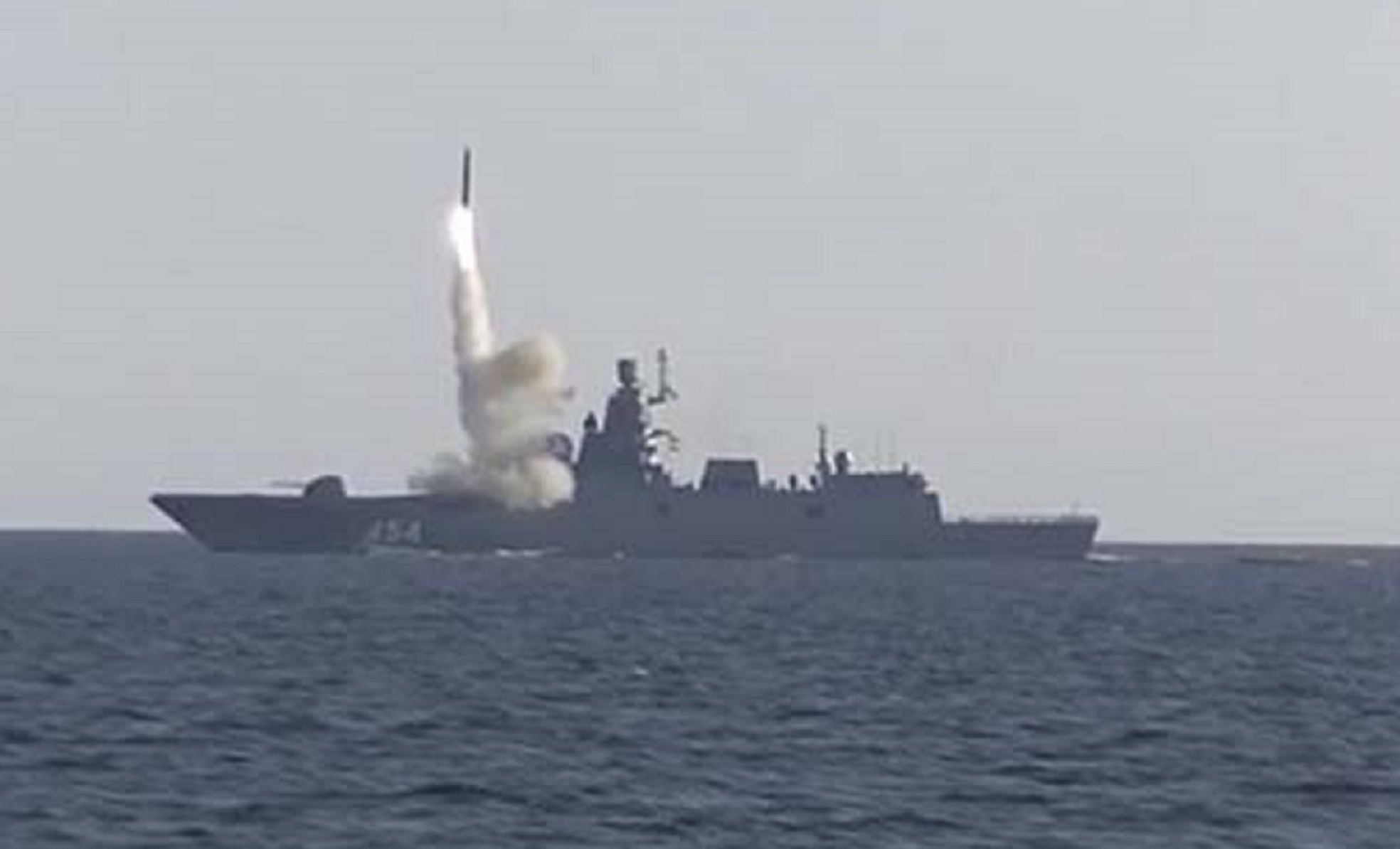

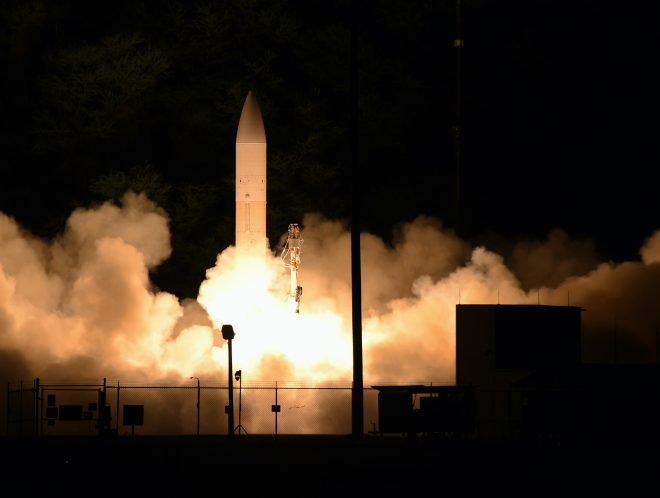
/cloudfront-us-east-2.images.arcpublishing.com/reuters/WRBQ7XZRZRMJZI57A7PUT77PCU.jpg)

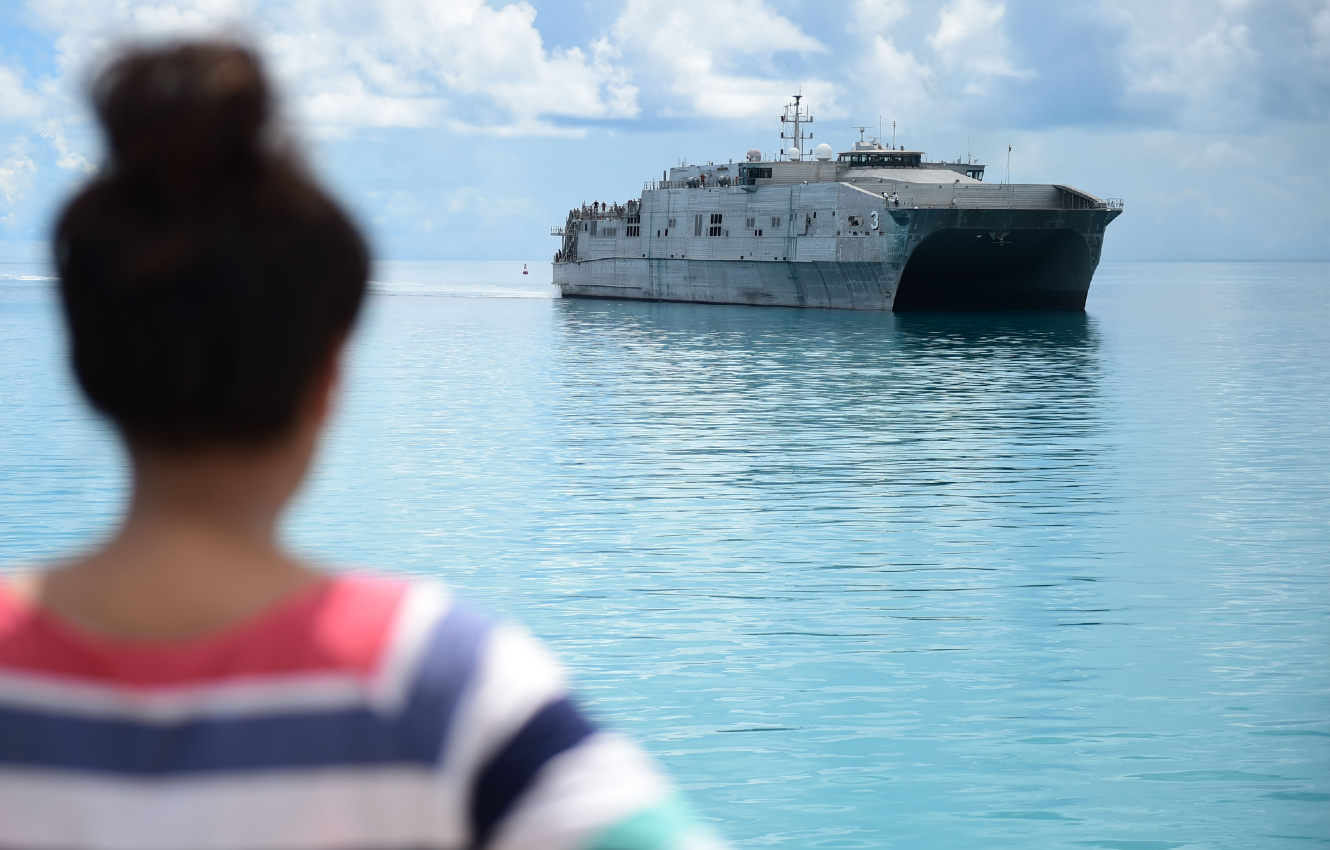
 G. Kulacki/UCS
G. Kulacki/UCS


